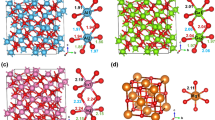Abstract
In this paper, the interaction potential energy profiles corresponding to the imidazole + CO2 system are determined using explicitly correlated coupled-cluster methods (CCSD(T)-F12) in combination with the VTZ-F12 basis set. The imidazole + CO2 van der Waals complex, which represents a relevant system for the study of the CO2 capture and storage in new materials, such as the zeolitic imidazolate frameworks (ZIFs), shows three different equilibrium geometries, two planar ones of Cs symmetry and one C1 structure. Their geometrical parameters and harmonic frequencies, as well as the one-dimensional potential energy profiles for the complex formation processes, are provided. Intermolecular bindings occur through the imidazole nitrogen atoms. The interaction energy depends strongly on the two molecule relative orientations. The full-dimensional intermolecular potentials show a significant anisotropy. The implications for the macromolecular simulations of the CO2 capture and sequestration in ZIFs are discussed. Preliminary tests of various theoretical methods (DFT and ab initio) have been performed to search for a methodology suitable for further application in large systems such as the substituted imidazoles (Zn-imidazoles or R-imidazoles). In these tests, the results obtained using CCSD(T)-F12 are employed as benchmarks. Suddenly, the MP2 theory competes with the explicitly correlated methods. MP2 theory corrects the deviation of the density functional theory calculations in the long-range region.






Similar content being viewed by others
References
Eddaoudi M, Li H, O’Keeffe M, Yaghi OM (1999) Nature 402:276–279
Lu AH, Dai S (eds) (2014) Porous materials for carbon dioxide capture. Springer, Berlin
Liu Y, Kravtsov VC, Larsen R, Eddaoudi M (2006) Chem Commun 14:1488–1490
Park KS, Ni Z, Côté AP, Choi JY, Huang R, Uribe-Romo FJ, Chae HK, O’Keeffe M, Yaghi OM (2006) Proc Natl Acad Sci USA 103:10186–10191
Cui P, Ma Y-G, Zhao H-H, Li B, Cheng J-R, Li P, Balbuena PB, Zhou H-C (2012) J Am Chem Soc 134:18892–18895
Bogle RG, Whitley GS, Soo SC, Johnstone AP, Vallance P (1994) Br J Pharmacol 111:1257–1261
Timón V, Senent ML, Hochlaf M (submitted)
Adler TB, Manby FR, Werner H-J (2009) J Chem Phys 130:054106
Rauhut G, Knizia G, Werner H-J (2009) J Chem Phys 130:054105
Al Mogren MM, Denis-Alpizar O, Abdallah DB, Stoecklin T, Halvick P, Senent M-L, Hochlaf M (2014) J Chem Phys 141:044308
Møller C, Plesset MS (1934) Phys Rev 46:618–622
Frisch MJ, Trucks GW, Schlegel HB, Scuseria GE, Robb MA, Cheeseman JR, Scalmani G, Barone V, Mennucci B, Petersson GA et al (2009) Gaussian 09, revision A.1. Gaussian, Inc., Wallingford
Werner H-J, Knowles PJ et al (2012) MOLPRO, version 2012.1, a package of ab initio programs. http://www.molpro.net
Dunning TH Jr (1989) J Chem Phys 90:1007
Woon DE, Dunning TH Jr (1993) J Chem Phys 98:1358–1371
Kendall RA, Dunning TH Jr, Harrison RJ (1992) J Chem Phys 96:6796–6806
Raghavachari K, Trucks GW, Pople JA, Head-Gordon M (1989) Chem Phys Lett 157:479–483
Purvis GD III, Bartlett RJ (1982) J Chem Phys 76:1910–1918
Hampel C, Peterson K, Werner H-J (1992) Chem Phys Lett 190:1–12
Dunning TH Jr (1989) J Chem Phys 90:1007–1023
Becke AD (1989) Phys Rev A 38:3098–3100
Lee C, Yang W, Parr RG (1989) Phys Rev B 37:785–789
Yanai T, Tew D, Handy N (2004) Chem Phys Lett 393:51–57
Adler TB, Werner H-J (2009) J Chem Phys 130:241101
Knizia G, Adler TB, Werner H-J (2009) J Chem Phys 130:054104
Adler TB, Knizia G, Werner H-J (2007) J Chem Phys 127:221106
Peterson KA, Adler TB, Werner H-J (2008) J Chem Phys 128:084102
Yousaf KE, Peterson KA (2009) J Chem Phys 129:184108
Boys F, Bernardi F (1970) Mol Phys 19:553–566
Prakash M, Mathivon K, Benoit DM, Chambaud G, Hochlaf M (2014) Phys Chem Chem Phys 16:12503–12509
Perdew JP, Burke K, Ernzerhof M (1996) Phys Rev Lett 77:3865–3868
Zerner MC, Lowe GH, Kirchner RF, Mueller-Westerhoff UT (1980) J Am Chem Soc 102:589–599
Brites B, Hochlaf M (2009) J Phys Chem A 113:11107–11111
Lauvergnat D, Senent ML, Jutier L, Hochlaf M (2011) J Chem Phys 135:074301
Yazidi O, Hochlaf M (2013) Phys Chem Chem Phys 15:10158–10166
Yaghlane SB, Cotton CE, Francisco JS, Linguerri R, Hochlaf M (2013) J Chem Phys 139:174313
Ajili Y, Hammami K, Jaidane N-E, Lanza M, Kalugina YN, Lique F, Hochlaf M (2013) Phys Chem Chem Phys 15:10062–10070
Yaghlane SB, Jaidane N-E, Cotton CE, Francisco JS, Al Mogren MM, Linguerri R, Hochlaf M (2014) J Chem Phys 140:244309
Kalugina YN, Buryak I, Ajili Y, Vigasin Y, Jaidane N-E, Hochlaf M (2014) J Chem Phys 140:234310
Mathivon K, Linguerri R, Hochlaf MJ (2013) J Chem Phys 139:164306
Acknowledgments
This research was supported by a Marie Curie International Research Staff Exchange Scheme Fellowship within the 7th European Community Framework Program under Grant No. PIRSES-GA-2012-31754, the COST Action CM1401, the COST Action CM1405 and the FIS2013-40626-P project of the MINECO, Spain. This work has benefited from a French government grant managed by ANR within the frame of the national program investments for the future ANR-11-LABX-022-01. M.P. thanks, the financial support from the LABEX Modélisation & Expérimentation pour la Construction Durable (MMCD, U. Paris-Est). The authors acknowledge the CTI (CSIC) and CESGA for computing facilities.
Author information
Authors and Affiliations
Corresponding authors
Rights and permissions
About this article
Cite this article
Dalbouha, S., Prakash, M., Timón, V. et al. Explicitly correlated interaction potential energy profile of imidazole + CO2 complex. Theor Chem Acc 134, 63 (2015). https://doi.org/10.1007/s00214-015-1657-z
Received:
Accepted:
Published:
DOI: https://doi.org/10.1007/s00214-015-1657-z




